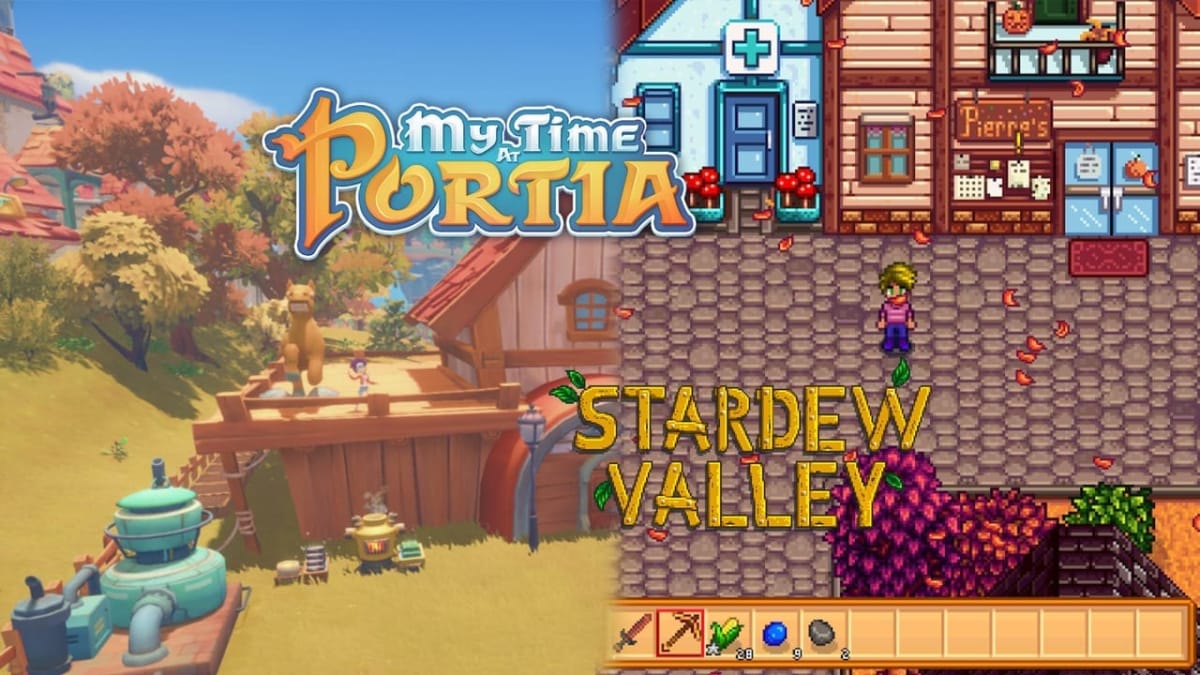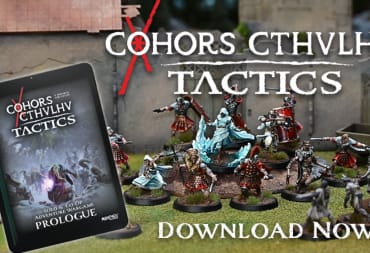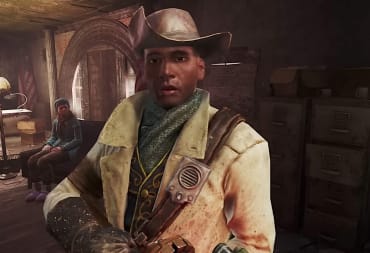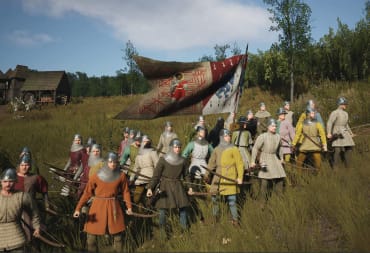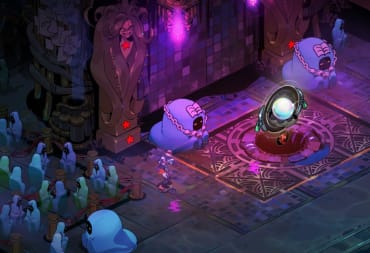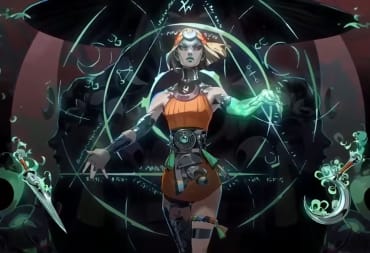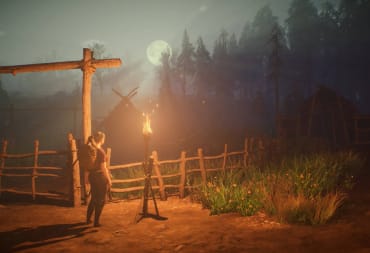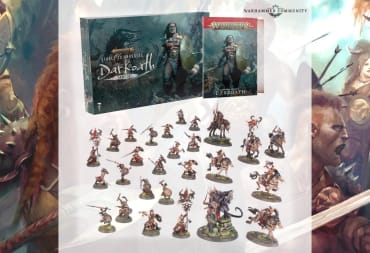Back in 2016, Stardew Valley set the indie scene on fire. Crafting sim fans hopped onto ConcernedApe’s back, showering his indie game with nothing but praise. Soon after, even fans who hadn’t played Harvest Moon in years checked it out, with all the hype pointing toward a return to form for the more niche genre. Now in 2019, My Time at Portia is taking aim for the crafting sim crown, intrinsically competing with Stardew Valley for a chance in the spotlight. But is Portia worth checking out if you’re hungry for more wholesome goodness? In many ways, yes, although it by no means replaces Stardew.
I recently spent more than 40 hours with My Time at Portia, and in the month before, I spent a good three weeks revisiting my love for Stardew Valley. While playing Portia, I couldn’t help but compare the two at every turn. Both are indie games that focus on farming, gathering, crafting, and socializing in a virtual world. You create your own character, move to a small town, and inherit a paternal family member’s estate. Both feature a wacky variety of characters in the nearby town, and I even had to use a wiki to supplement both experiences.
The similarities are pretty striking, and I implore loyal Stardew fans to take a gander at Portia. There are some things that it executes better than Stardew, whereas the opposite is just as true. Neither are perfect experiences, but if you enjoyed your time with Stardew, you’ll likely find something to like in Portia as well.
Portia is a Place for Friends
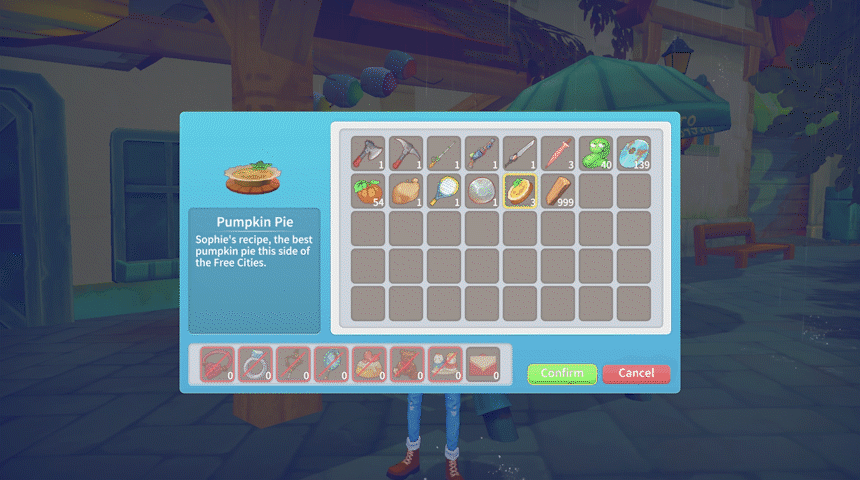
Socializing with the make-believe inhabitants of these small towns is a cornerstone of crafting sim experiences. While Stardew has a decent cast of characters, Portia absolutely nails its social aspects. Pathea went the extra mile by rendering its game in a fully 3D environment, bringing the characters more to life than Stardew’s pixel art. With the addition of voice acting, the little nuances of their personalities are more striking. Although I’ve spent more time in the valley, I found myself liking the NPCs of Portia far more quickly.
The friendship systems are similar at the outset, with gifts and daily greetings netting you a steady stream of relationship points. Where Portia innovates, however, is in how your efforts have a cascading effect. To put it simply, once you reach a certain relationship threshold with an NPC, bonuses cascade to their close friends. When you, the new kid on the block, befriend someone, it becomes easier to bond with their friends. Eventually, it becomes like dominos, where reaching one rank with someone will improve your rank with their friends, which improves your rank with their friends, and so on. Furthermore, it’s a more realistic approach to how social circles work. This makes Stardew’s friendship system feel disjointed; you can become best friends with one person, while their close family members can be complete strangers to you.
Agriculture Shines More in Stardew Valley
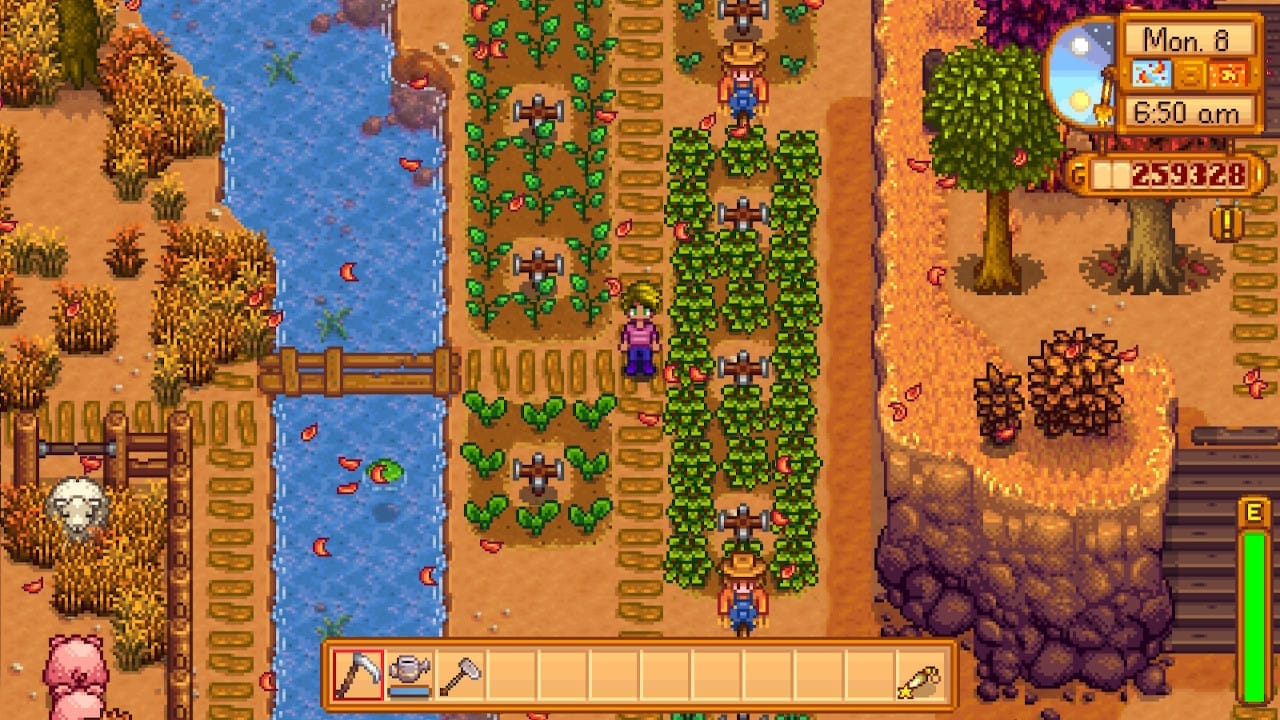
If you’re looking for a good farming simulator, however, don’t expect Portia to shine over Stardew. Eric “ConcernedApe” Barone’s labor of love makes farming the central mechanic. While there are dungeons to mine and lakes to fish, a majority of the gameplay loop involves raising crops. Luckily, Stardew contains an excellent system that remains stellar to this day.
You start with humble beginnings on a small farm with crops watered by hand. Eventually, however, you can grow into an automated farming machine, yielding more fruits and veggies than you can manage. The curve is gradual and rewarding, and the best part is that farming can be as simple or complex as you want it to be. If you prefer to water crops by hand and keep a small yield, you can. If you’d rather optimize your land for maximum sprinkler placement, that’s just as viable an option.
Portia unfortunately loses out in this aspect. Its farming capabilities are shallow at best, and frankly it’s almost not worth the effort. For one, you can’t use any of the land around you, despite your house having a nice view of a sprawling field of wheat. Instead, you need to craft planter boxes for each crop you want to grow. Beyond that, there’s no ritual or ceremony to agriculture. Once you sow a seed, you dump some fertilizer on it and ignore it. After a few days, it might need more fertilizer or else it stops growing, but it’s easy to forget amid all the crafting and mining that happens. Granted, Portia focuses far less on farming, making it less of a moneymaker than building bridges and bus stops.
My Time at Portia Invites Newbies to Play
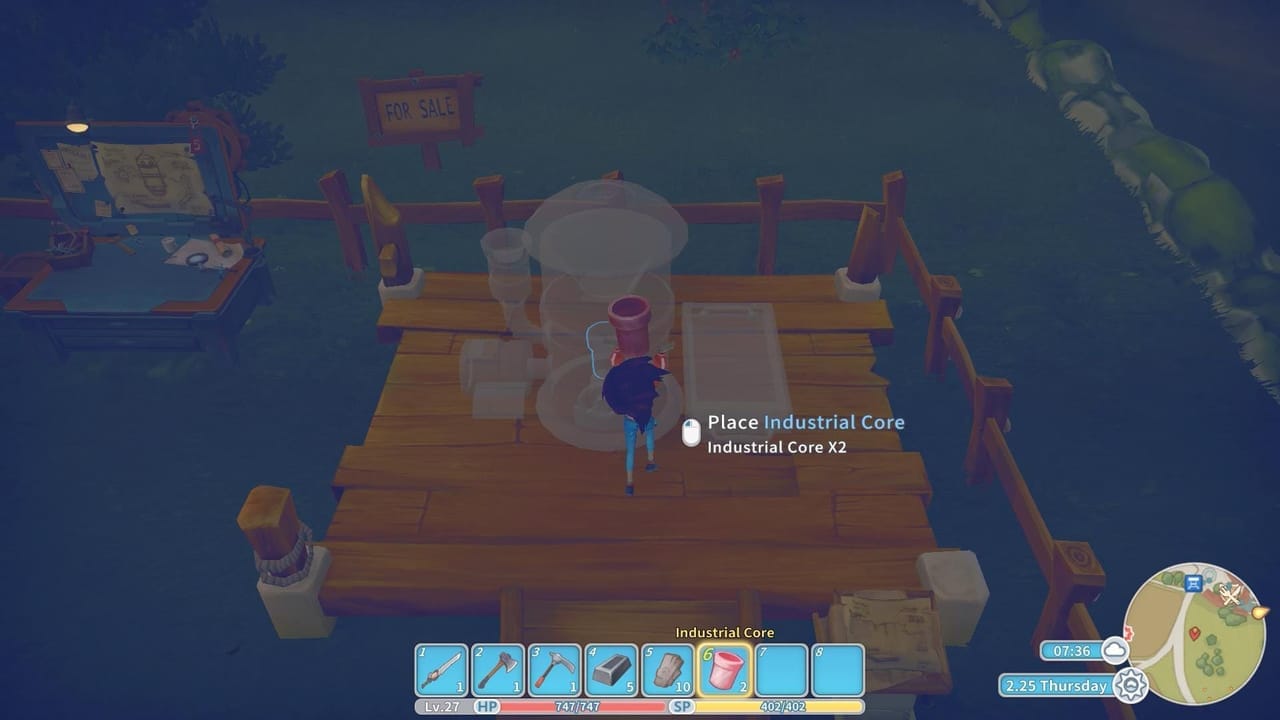
If you’re new to the genre or want to play a crafting sim without worrying about the wiki as much, Portia offers a robust experience to newbies. The townsfolk consistently give you a reason to feel welcome, always going out of their way to involve you in their happenings. When the town needs more street lamps, they commission you and your workshop. Build and place some street lamps, and they act as a constant reminder of your contribution to town. NPCs will even express their gratitude, which meaningfully translates into relationship points.
While both crafting sims in question are obtuse enough to require a wiki, Portia strives to be the more welcoming of the two. Crafting diagrams are easily laid out, with instructions that are simple enough to follow. Quests provide map markers, so you never get lost. Townspeople will even remind you where to gather specific materials for certain commissions. At every step, Pathea goes the extra mile to make its game a friendly experience for those who don’t want to rely on an external source of information.
Stardew, on the other hand, can easily throw people off, especially those new to the crafting sim genre. The townspeople often don’t teach you how to play, so having a wiki on hand can prove almost vital to the experience.
A Minor Setback in Portia
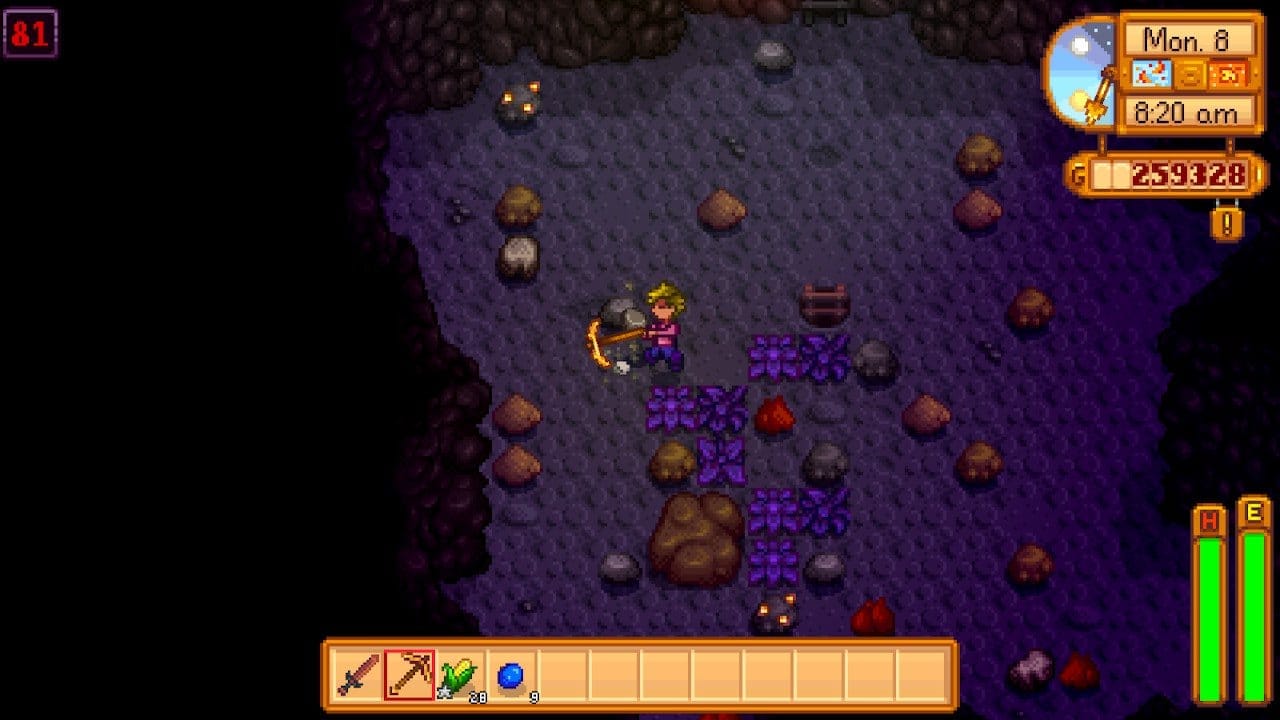
If mining and crafting are more up your alley, then Portia might not be the easiest place to be. Stardew’s mining system is nothing necessarily special, but it beats out the tedium of Portia’s. To the northeast of Stardew Valley lies a 120-floor mining shaft, filled with ores, gems, and artifacts. Aside from the occasional monsters, it’s a simple and effective process. Beyond that, taking mining seriously isn’t a vital part of making a living in Stardew, although it does help. Furthermore, crafting doesn’t test your patience, for the most part. Building food processors and ore smelters is as easy as a a click of a button. The wait for materials can be a pain, but there’s no demand on the other end aside from your own.
In the land of Portia, however, mining is a central part of the game, and the holistic experience suffers for it. The mines — yes, there are multiple — are all built exactly the same and filled with an extremely malleable rock-like substance. You carve your own tunnels with a pickaxe, and valuable ores are only denoted by a different shade of rock. It becomes dull very quickly, with the consistent “ting” of the pickaxe almost digging under your skin.
Crafting in Portia can be a source of frustration, despite how neat it is. Building bigger contraptions requires you to physically place materials on your assembly station, like a 3D puzzle. The hindrance, however, comes from the painfully slow timers for some materials. Smelting some ingots can take multiple in-game days, and the furnaces require constant maintenance. What makes it worse, unfortunately, is the quick demand of some of these projects. To be the best workshop, you have to make the most commissions as quick as possible. However, managing your furnaces and cutters proves to be a bottleneck that’s tolerable but at times aggravating.
My Time at Portia: The Crafty Game Worth Trying
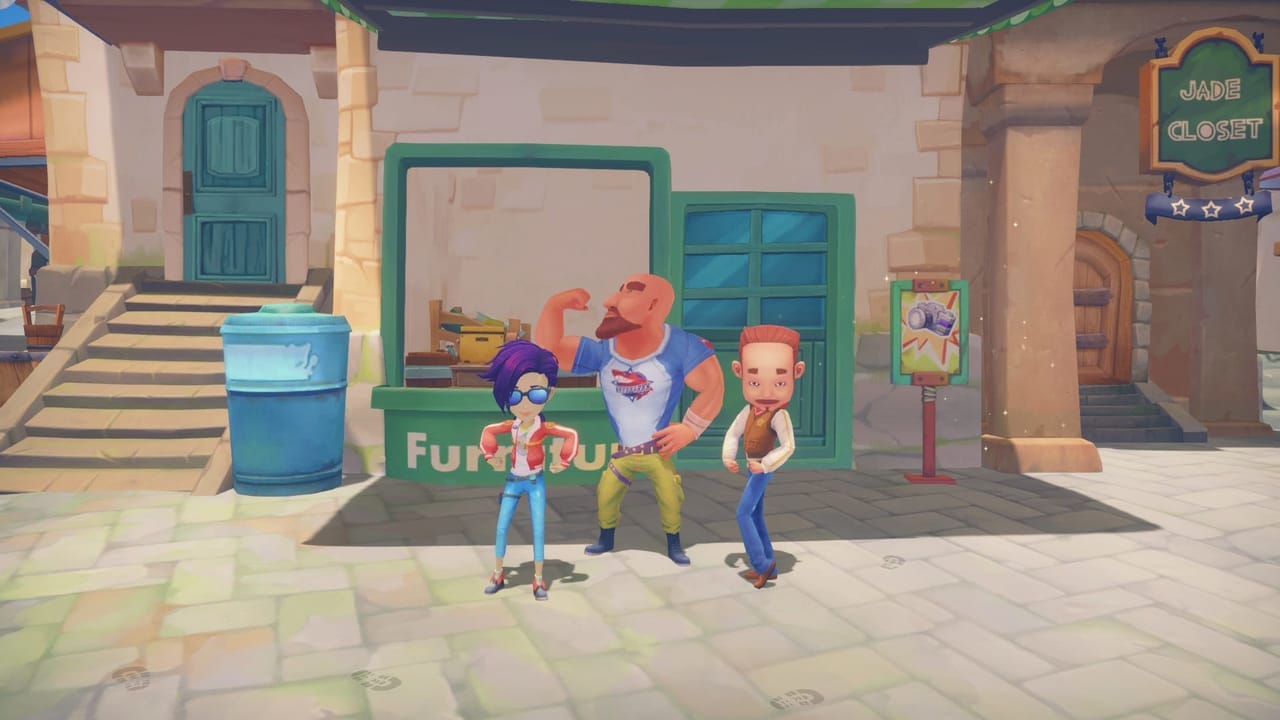
In some ways, Stardew Valley proves itself to still be one of the best indie crafting sims. My Time at Portia may never take Stardew’s place in the market, but Pathea’s newest game is still worth a shot. It innovates on the friendship system in a way that would be a valuable addition to the genre moving forward, and its welcoming charisma is wholesomely appealing. Additionally, it features one of the more believable, lifelike villages in all my experience playing these kinds of games.
At the end of the day, My Time at Portia is a laudable attempt at a crafting sim, coming from another indie studio no less. The charming aesthetic and surprisingly deep lore can keep you entertained for hours. It might not reach the same heights that Stardew Valley has (and might continue to achieve). Nonetheless, it remains a welcome addition to a genre that could always use more celebrated titles.
Have a tip, or want to point out something we missed? Leave a Comment or e-mail us at tips@techraptor.net
